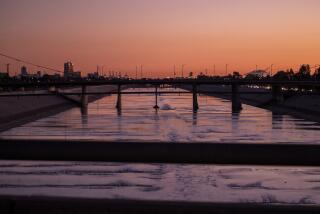Monster tsunami in Geneva was produced by rockfall, researchers say
A massive wave of water that devastated the shoreline of Lake Geneva and much of the city of Geneva 1,500 years ago was probably triggered by a massive landfall in the Rhone River, researchers reported this week. The flooding in AD 563 was described by contemporary authors Gregory of Tours and Marius of Avenches, but the source of the wave has been a controversial topic. Some scientists have speculated that the tsunami was caused by a rockfall upstream from the lake in the Rhone River, displacing massive amounts of water. Other researchers thought that the rockfall, known as the Tauredunum event, dammed the river; when the dam burst, it unleashed a massive wave of water. New research indicates that the first explanation is more likely correct and suggests that similar events may happen again in the future, endangering the 1 million people who live in low-lying areas along the shore.
Tsunamis could also occur in other mountain lakes with similar geological conditions, researchers said.
“It’s certainly happened before and I think that we can expect that it will probably happen again sometime,” said geologist Guy Simpson of the University of Geneva, a member of the team that reported the new research in the journal Nature Geoscience.
A team headed by geologist Katrina Kremer of the University of Geneva used seismic reflection to study the floor of Lake Geneva from a ship. They discovered a “tongue” of material about 6 miles long, 3 miles wide and 16 feet deep on average in the lake near where the Rhone enters. The tongue is composed of turbidite, a jumbled mixture of sand and silt that is laid down by rapid water movement. The material all seems to have been laid down in one event, and dating of organic materials found in a core of the tongue indicate it was formed between AD 381 and 612. The only known geological event during that period was the Tauredunum event.
Researchers know that sediment builds up in the Rhone River basin, with channels or “canyons” allowing water to flow through them. The “canyon” walls themselves are relatively unstable and a major event, such as an earthquake, could cause them to collapse. The team speculates that the rockfall from Mount Tauredunum -- now known as Grammot -- could have caused the sediment to collapse and surge into the lake itself, forming the tongue in the Rhone delta.
Computer simulations indicate that the surge of soil would have created a massive tsunami about 42 feet high when it reached Lausanne in about 15 minutes. The wave would have been about 28 feet high when it reached Geneva after about 70 minutes. That would have inundated large parts of the city, collapsed buildings and destroyed bridges.
Imaging of the entire lake bottom indicates that there were at least four earlier events of similar size during the roughly 19,000 years since Lake Geneva was formed by the northward migration of glaciers at the end of the ice age. Those findings suggest that another event could happen sometime in the future. With the population buildup in the area, the results could be much more catastrophic.






